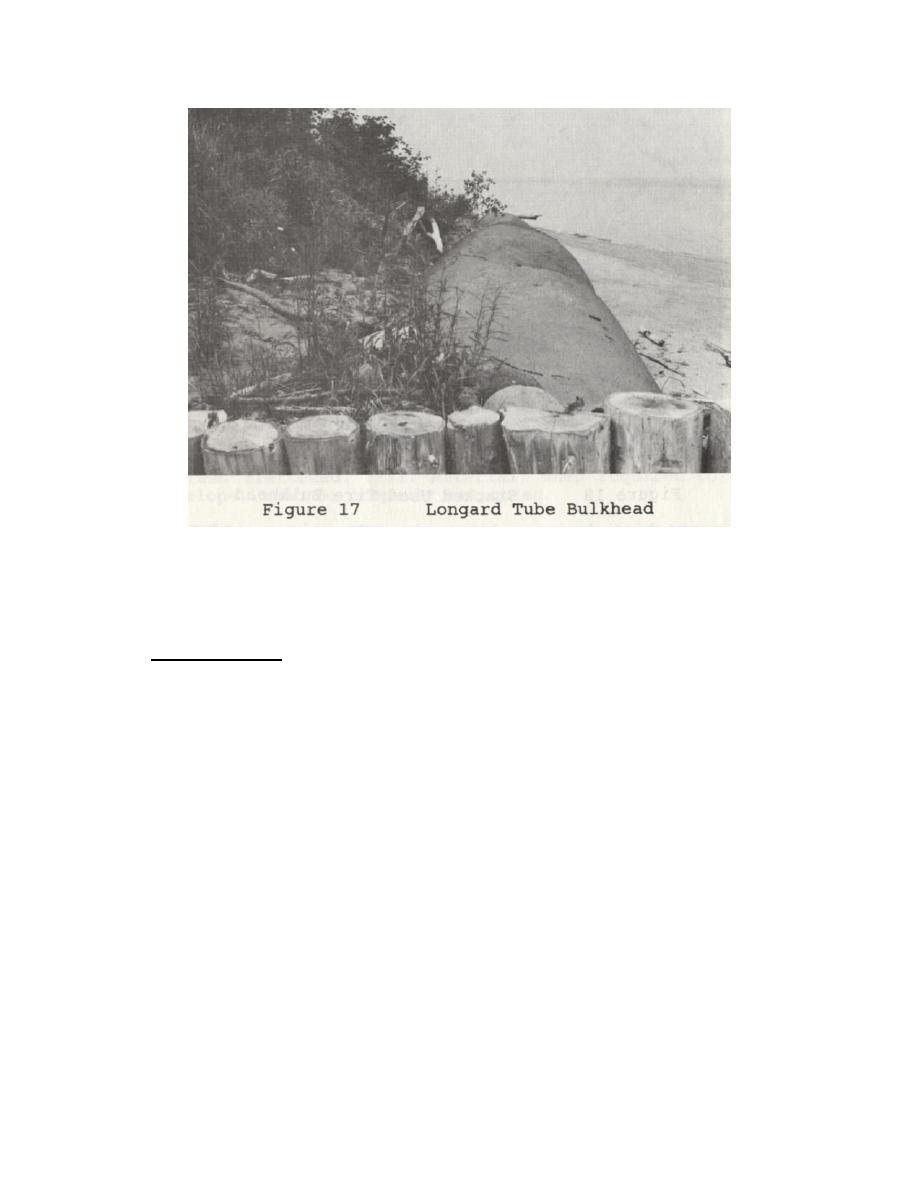
The Longard tube depends on its weight to resist overturning and on friction to maintain its
position. It is not designed to resist earth pressures, but to protect the toe of the bank from wave action.
The bank should be graded to a stable slope, therefore, or the tube should be placed seaward of the toe to
prevent possible damage or movement due to slumping of the bank.
Stacked Used Tires. Because used tires are readily available at most sites at no cost, many people
have tried to use them for shore protection devices. The bulkhead on Figure 18 was made with scrap
tires interconnected (both vertically and horizontally) with galvanized spikes and pushnuts. The tires
were stacked in a staggered pattern over a nonwoven filter cloth and granular material was used both as
backfill in low areas, and as fill in the tires. Three rows of galvanized steel anchors were used to secure
the structure to the beach. The structure failed apparently because the interconnection between tires was
inadequate to hold the structure together. The gravel washed out of the tires, causing them to lose weight
until they were lifted by waves. This system is not recommended in view of better, less costly
alternatives.
This structure illustrates a common deficiency in using scrap tires. While their availability is a
strong temptation to use them in shore protection devices, tires are extremely rugged and cannot be
fastened together securely except by considerable labor and expense. In almost all cases, failure results
when interconnections do not perform as expected.
28



 Previous Page
Previous Page
